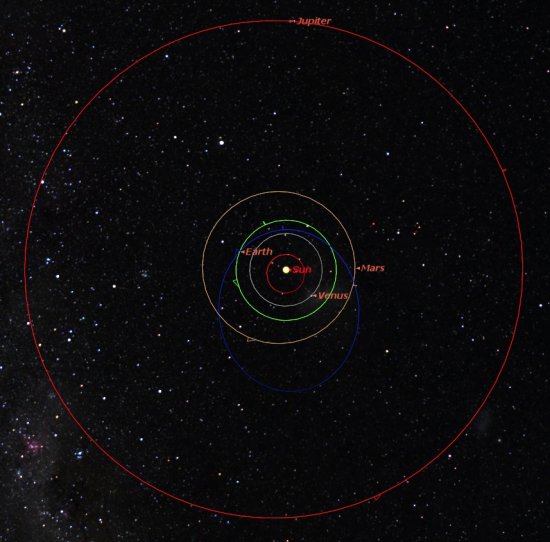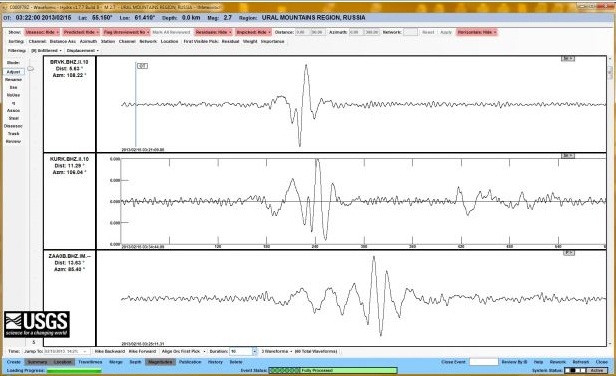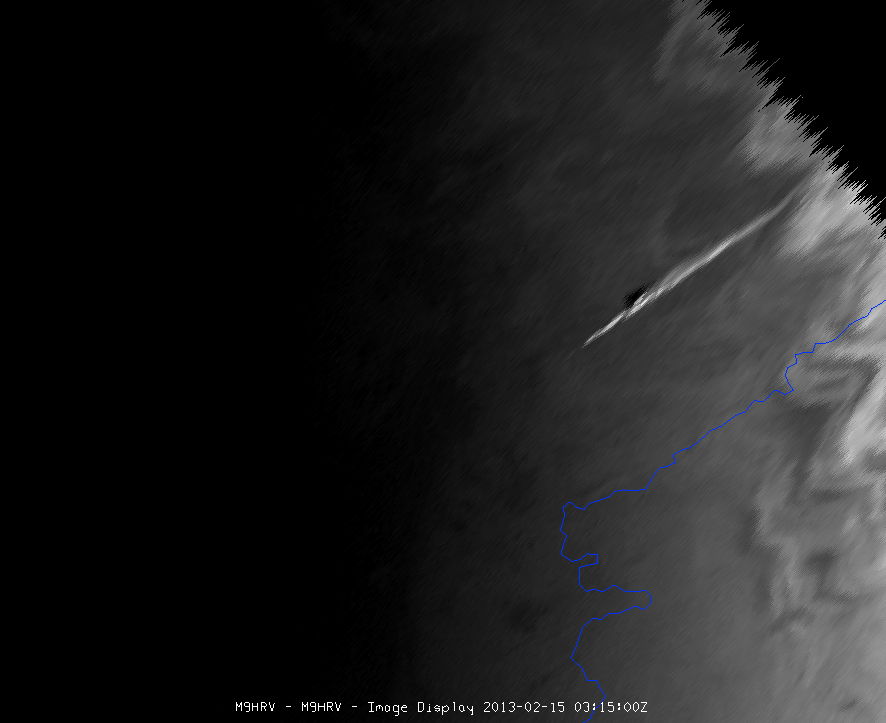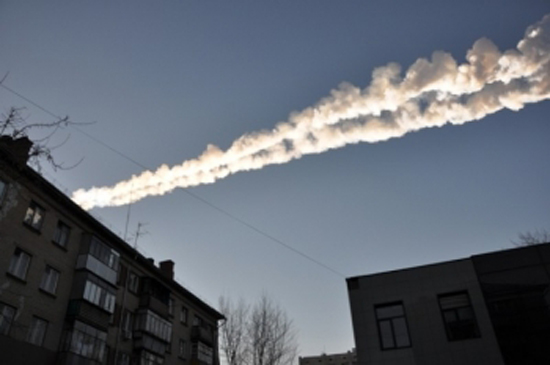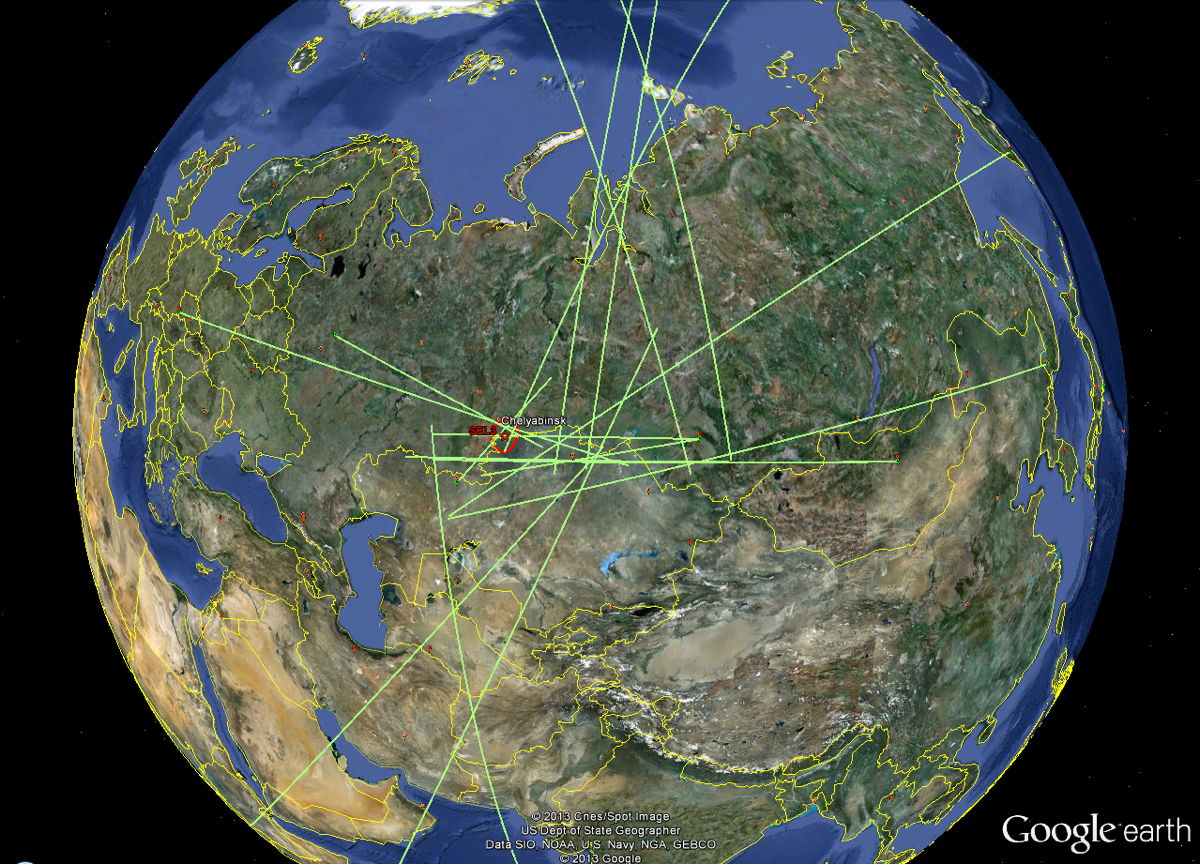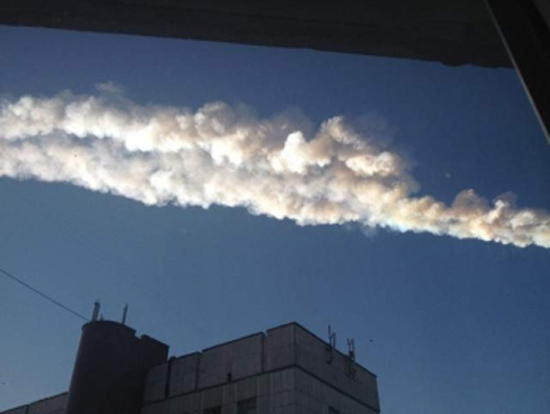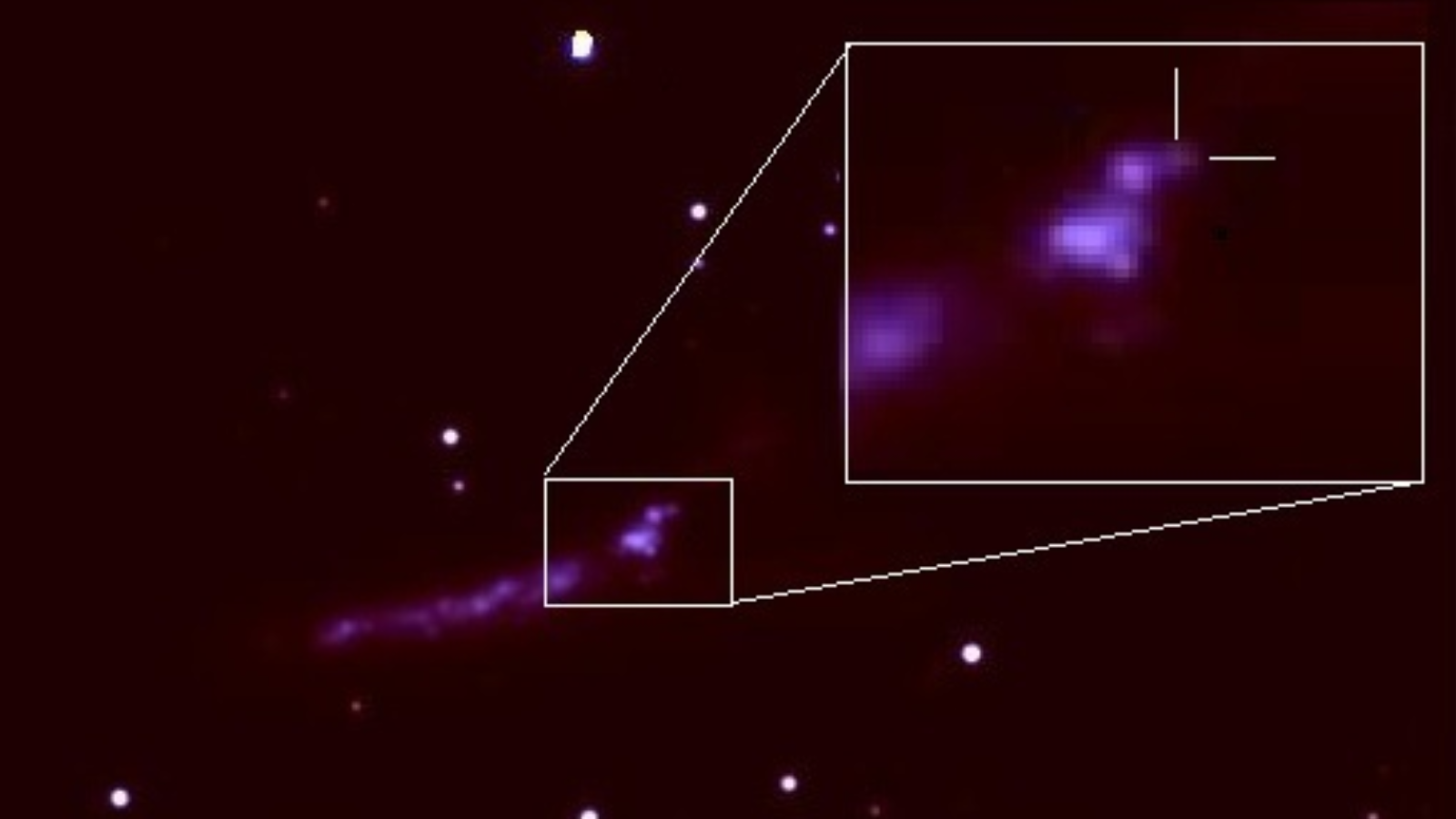Photos: Russian Meteor Explosion of Feb. 15, 2013
Orbit of the Russian Meteor
The bright blue line in the diagram above shows the orbit of the Russian meteor prior to the meteor breaking apart over the city of Chelyabinsk.
Russian Meteor Blast
Shaking caused by Friday's meteor blast over Russia, recorded by earthquake monitoring instruments.
Asteroid Vapour Trail
An image from the SEVIRI instrument aboard Eumetsat's Meteosat-10 geostationary satellite. The vapour trail visible in the centre of the image was left by an asteroid that struck Earth near Chelyabinsk, Russia, Feb. 15, 2013, around 03:15 UT. Initial media reports included accounts of injuries and property loss. This image uses data from the High Resolution Visible (HRV) channel of SEVIRI that can produce images with both high spatial and temporal resolution.
Meteor Over Russia Seen by Meteosat-9
The meteor which exploded over the Urals of central Russia was seen by Meteosat-9, at the edge of the satellite view. Hundreds of people were reportedly injured as the meteor's massive sonic boom caused widespread damage. Image taken Feb. 15, 2013, 3:15 UTC.
Orbits of the Russia Meteor and Asteroid 2012 DA14
The orbits of the Russian meteor and Asteroid 2012 DA14 are nothing alike meaning they are not related.
Meteor Trail Over Russia: Feb. 15, 2013
What appears to be a meteor trail over eastern Russia is seen in this image released Feb. 15, 2013, by the Russian Emergency Ministry. The meteor fall included a massive blast, according to Russian reports.
Map of Infrasound Stations
Seventeen infrasound stations in the Comprehensive Nuclear-Test-Ban Treaty Organization's network detected the infrasonic waves from the meteor that broke-up over Russia’s Ural mountains on Feb. 15, 2013.
Breaking space news, the latest updates on rocket launches, skywatching events and more!
Spectrogram for Russian Meteor
Milton Garces, Founder and Director, Infrasound Lab, HIGP, University of Hawaii, tweeted this photo of the spectrogram for the Russian meteor that exploded on Feb. 15, 2013. He wrote: "1h Infrasound spectrogram for #RussianMeteor, ~1500 km from hypercenter. Tip of the iceberg ... plenty energy below 1 Hz pic.twitter.com/3eYPf2jM"
Meteor Trail Over Russia: Feb. 15
What appears to be a meteor trail over eastern Russia is seen in this image released Feb. 15, 2013, by the Russian Emergency Ministry. The meteor fall included a massive blast, according to Russian reports.
Thermal Impact of Russia Meteor
IR3.9 image of the thermal impact of the Russia meteor taken by Meteosat-9 satellite, Feb. 15, 2013, 3:15 UTC.

Space.com is the premier source of space exploration, innovation and astronomy news, chronicling (and celebrating) humanity's ongoing expansion across the final frontier. Originally founded in 1999, Space.com is, and always has been, the passion of writers and editors who are space fans and also trained journalists. Our current news team consists of Editor-in-Chief Tariq Malik; Editor Hanneke Weitering, Senior Space Writer Mike Wall; Senior Writer Meghan Bartels; Senior Writer Chelsea Gohd, Senior Writer Tereza Pultarova and Staff Writer Alexander Cox, focusing on e-commerce. Senior Producer Steve Spaleta oversees our space videos, with Diana Whitcroft as our Social Media Editor.
